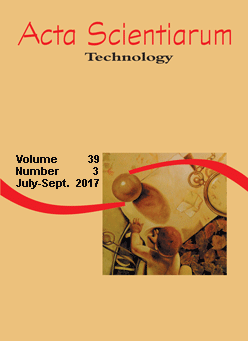<b>Steel waste used in reducing emissions of nitrous oxide
DOI:
https://doi.org/10.4025/actascitechnol.v39i3.30886Keywords:
greenhouse gas, reuse, characterization, catalyst, pollution.Abstract
Â
Gross wastes of the steel industry were evaluated as catalyst for the reduction of nitrous oxide. The wastes were obtained from steel mill residues (MS), lamination (LA), quenching (QC) and blast furnace powder (BF) and characterized by X-ray fluorescence (XRF), X-ray diffraction (XRD) and hydrogen temperature-programmed reduction (H2-TPR). Results revealed Si, Ca, S, Rh, Fe, Cr, Mn and Cu for all wastes, with iron featuring the greatest amount. H2-TPR analyses showed H2 consumption peaks associated with rhodium oxide, also detected by XRF. The content of comparative rhodium oxide in samples was: MS > LA > QC > BF. N2O conversion increases with increase in temperature for all catalysts. The activity of the catalysts MS > LA > QC > BF was related to rhodium oxide rate in the wastes.
Â
Downloads
Downloads
Published
How to Cite
Issue
Section
License
DECLARATION OF ORIGINALITY AND COPYRIGHTS
I Declare that current article is original and has not been submitted for publication, in part or in whole, to any other national or international journal.
The copyrights belong exclusively to the authors. Published content is licensed under Creative Commons Attribution 4.0 (CC BY 4.0) guidelines, which allows sharing (copy and distribution of the material in any medium or format) and adaptation (remix, transform, and build upon the material) for any purpose, even commercially, under the terms of attribution.
Read this link for further information on how to use CC BY 4.0 properly.











8.png)




